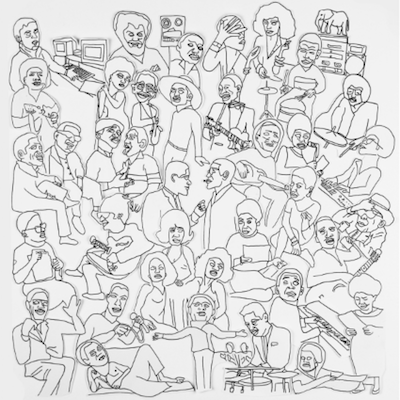 Romare – Projections
Romare – Projections





Romare’s newest release Projections uses both remixes and samples to pay homage to African musical traditions. If each track is looked at as a kind of sound collage, Romare’s original work and his ear for sampling are celebrated both individually and collectively. His creation is mellow and engaging, yet complex. There are bluesy moments, swinging jazz samples, and plenty of funk, as well as a semi-political agenda. Politics aside, the resulting album flavors his engaging aesthetic as equally as it conflicts it.
Each of the album’s tracks can be best understood through the samples and structure of the track; however, occasionally the sound collage he’s stitched together becomes muddled. The purpose behind each sound and sample is not always clear. But Romare’s name comes from collage artist Romare Berden, which explains his intricate style of beat-making.
His 2012 EP release Meditations On Afrocentrism features similar sampling. Even though Romare sort of explains his intents through the final track “Footnotes,” it is contradicting and confusing. Having studied African and African American music, he’s allowed the benefit of the doubt to a degree, yet it feels unclear to the listener why he took Projections in this direction, which can become borderline appropriative at moments.
Album opener “Nina’s Charm” samples Nina Simone singing, “Whatever ever happens just/Keep your eyes on me,” and other similar phrases over a muted gospel chorus in the background and a simple yet groovy synth beat. The album progresses from there to include jazzy samples as heard on “Work Song,” and “Motherless Child.”
On “Lover Man,” Romare samples the repetition from James Brown’s “I Got the Feelin’,” adding a sexy slinkiness that suits the title well. The track’s warped synth beat is signature Romare.
The way he plays with the samples keeps them relatively recognizable, yet still distorted, shaped into an entirely new track.
A similar tactic is used on “Roots,” which has a deep, awkward “wub” paired with a house-like rhythm and what is assumed to be African drumming in the background. It works because it repurposes the sample in a nuaced way; however, it also is pretty formulaic, becoming predictable after long.
In contrast, tracks like “La Petit Mort” and “Jimmy’s Lament” have perhaps no samples, or if there are samples, they’re manipulated beyond recognition. These tracks sound simpler and more minimal as well. Romare has a history of sampling, but he blurs the distinction with this more experimental album.
Projections is wonderfully crafted, with absolutely engaging reimaginings of both old and new ideas. Romare is a skilled musician, and that shows throughout the album’s structure and quality. Perhaps we can dub Romare as a part of a new subgenre, collage-house. Projections proves Romare’s promise within electronic music, especially if he figures out his intentions as an artist.
Romare – Projections tracklist:
- Nina’s Charm
- Work Song
- Motherless Child
- Ray’s Foot
- Roots
- Jimmy’s Lament
- Lover Man
- Rainbow
- Prison Blues
- The Drifter
- La Petite Mort










